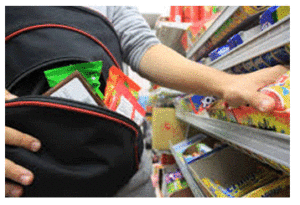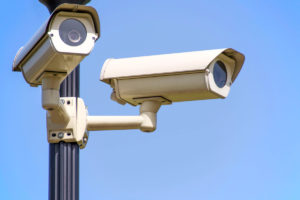 Have you ever noticed that when a convenience store robbery takes place the crook never demands all of the credit card slips? I have never heard of a bank robber pulling out a gun and yelling for the teller to give them all of the checks in the drawer. What is it the bad guys are always trying to get their hands on…CASH! While Loss Prevention departments do work on credit card and fraudulent check cases our bigger concern is cash theft and fraud. It has been my experience that in many incidents involving a stolen credit card or check, I have been able to work with bank investigators and police detectives to identify and in some cases resolve those crimes. In those situations there is usually a victim as well as a perpetrator of the crime. When it comes to cash loss cases it becomes another matter altogether, the victim is the store. While we may have video of the crime there may not be any other means of tying in additional information. Another issue with cash losses is that the stolen money cannot be tracked further. Stolen credit cards tend to leave a trail of locations where they are used which can lead to greater opportunities to pick up on additional evidence. The same can be true with fraudulent check writing cases. With a cash loss case, once it’s gone you don’t see it again, money is not traced.
Have you ever noticed that when a convenience store robbery takes place the crook never demands all of the credit card slips? I have never heard of a bank robber pulling out a gun and yelling for the teller to give them all of the checks in the drawer. What is it the bad guys are always trying to get their hands on…CASH! While Loss Prevention departments do work on credit card and fraudulent check cases our bigger concern is cash theft and fraud. It has been my experience that in many incidents involving a stolen credit card or check, I have been able to work with bank investigators and police detectives to identify and in some cases resolve those crimes. In those situations there is usually a victim as well as a perpetrator of the crime. When it comes to cash loss cases it becomes another matter altogether, the victim is the store. While we may have video of the crime there may not be any other means of tying in additional information. Another issue with cash losses is that the stolen money cannot be tracked further. Stolen credit cards tend to leave a trail of locations where they are used which can lead to greater opportunities to pick up on additional evidence. The same can be true with fraudulent check writing cases. With a cash loss case, once it’s gone you don’t see it again, money is not traced.
What kind of situations can lead to cash losses? The first thing that comes to mind is internal employee theft. A cashier may steal directly from a register till and pocket the money. You could also have a cashier stealing from customers by short-changing them. I recall at least one case I had in which the employee was keeping back a dollar every so often from a customer’s change they were due back. Until a customer complained to the supervisor rather than going back to the cashier, I had no idea it was taking place.
External causes of cash loss can include:
- Robbery
- Short change artists
- Till Tappers
- Counterfeit and fraudulent cash (fraudulent bills may be a $1 bill with two $100 corners pasted over two of the $1 corners. The other two corners are pasted on another $1 bill giving the bad guy $200 of value for a $100 bill and yes, it does happen when a bad guy tries to hurry a new or young cashier).
- Grab and Runs
In all the cases of external cash losses there are cash handling tips that any store can use to minimize the risk of loss or the amount of exposure to loss:
- Be sure to do daily bank deposits. Preferably contract with an armored car service to pick up money or drop off change orders. If you choose to conduct your own deposits vary the time of day and the route to the bank. Storing excess money in your cash office only increases the amount you could lose in a robbery.
- Train cashiers to call a manager or supervisor for any transaction that is $20 or less and the payment is a $100 bill.
- Train cashiers to never allow someone to put their hand in the till. Slam the drawer closed if necessary. If a customer is taking too long to look for change, the drawer should be closed.
- Have cashiers place all large bills under the till and call for a pick up when the transaction is complete or have a cash drop at the register that can only be opened by a supervisor. This keeps bills from being seen by customers when the drawer is opened and prevents a grab and run.
- Use locking till covers for registers. When a register is not in use but has money in it, the till cover prevents someone from getting to the cash even if they have a register key to open the drawer.
- Cashiers should each have their own till. When multiple employees work from one register it is more difficult to pinpoint who may be causing cash shortages and dishonest cashiers know it.
- Conduct register skims when they are over a pre-determined dollar amount. There is a temptation for dishonest employees to feel that the more money in the register the less likely a $10 or $20 bill will be missed. Lesser amounts in a register drawer also take away incentive for a potential robber.
There is always going to be risk of loss when cash is an accepted form of tender for your business. Minimizing that risk can be done through training and a few commonsense security measures.


 Wal-Mart has a unique way to cut down on shoplifting
Wal-Mart has a unique way to cut down on shoplifting Would you knowingly buy a car with a defective engine? Of course not! So why would you hire a “defective employee”?
Would you knowingly buy a car with a defective engine? Of course not! So why would you hire a “defective employee”? When do closed circuit television malfunctions occur? I’m sure you can guess, it is always at the point when you need it most. I can’t recall the number of instances when I had a cash shortage I needed to look for and when I attempted to pull video through the DVR the video was already dropped or the camera wasn’t functioning. I remember having to look for an image of a suspect in a shoplifting incident and the picture was too grainy to be of any use due to a dirty camera lens or dome. One slightly embarrassing situation that stands out in my mind involved robberies that were taking place behind our store. I had developed a great working relationship with our local police department and they knew the quality of our camera system. Investigators came to me seeking assistance with outdoor camera footage to try to identify the criminals conducting the robberies. I pulled up video of the date and time in question and much to my chagrin the camera had a great shot of the ground directly underneath it. A power surge had impacted the programming of the pan/tilt/zoom (PTZ) camera and placed it in a default position. I had not noticed the problem in a timely fashion and could not recall how long it was before I did catch the issue. The good news was I was able to re-program the camera and eventually we did provide footage of an incident a little later that led to an arrest.
When do closed circuit television malfunctions occur? I’m sure you can guess, it is always at the point when you need it most. I can’t recall the number of instances when I had a cash shortage I needed to look for and when I attempted to pull video through the DVR the video was already dropped or the camera wasn’t functioning. I remember having to look for an image of a suspect in a shoplifting incident and the picture was too grainy to be of any use due to a dirty camera lens or dome. One slightly embarrassing situation that stands out in my mind involved robberies that were taking place behind our store. I had developed a great working relationship with our local police department and they knew the quality of our camera system. Investigators came to me seeking assistance with outdoor camera footage to try to identify the criminals conducting the robberies. I pulled up video of the date and time in question and much to my chagrin the camera had a great shot of the ground directly underneath it. A power surge had impacted the programming of the pan/tilt/zoom (PTZ) camera and placed it in a default position. I had not noticed the problem in a timely fashion and could not recall how long it was before I did catch the issue. The good news was I was able to re-program the camera and eventually we did provide footage of an incident a little later that led to an arrest. The National Association for Shoplifting Prevention
The National Association for Shoplifting Prevention Some shoplifters are violent. I follow these incidents and they seem to be becoming more frequent. The reasons why are many and there is plenty of blame to go around: State and local governments, courts and lax Judges, parents and even retailers themselves. Much of that is out of our control. We must keep violent and non-violent shoplifters from even entering our stores.
Some shoplifters are violent. I follow these incidents and they seem to be becoming more frequent. The reasons why are many and there is plenty of blame to go around: State and local governments, courts and lax Judges, parents and even retailers themselves. Much of that is out of our control. We must keep violent and non-violent shoplifters from even entering our stores. I recently read over an article opining the phrase “sales cures shrink”. While the author touched on both sides of the coin, I found it interesting that in today’s retail climate, anyone would think that you can simply sell your way out of losses. Let’s cut to the chase here; we’re not bringing in 20% increases over last year, hell we’re lucky to come in flat to last year. Online giants like Amazon are eating up market share like never before and if brick and mortar don’t do something fast, sales will continue to slump.
I recently read over an article opining the phrase “sales cures shrink”. While the author touched on both sides of the coin, I found it interesting that in today’s retail climate, anyone would think that you can simply sell your way out of losses. Let’s cut to the chase here; we’re not bringing in 20% increases over last year, hell we’re lucky to come in flat to last year. Online giants like Amazon are eating up market share like never before and if brick and mortar don’t do something fast, sales will continue to slump.